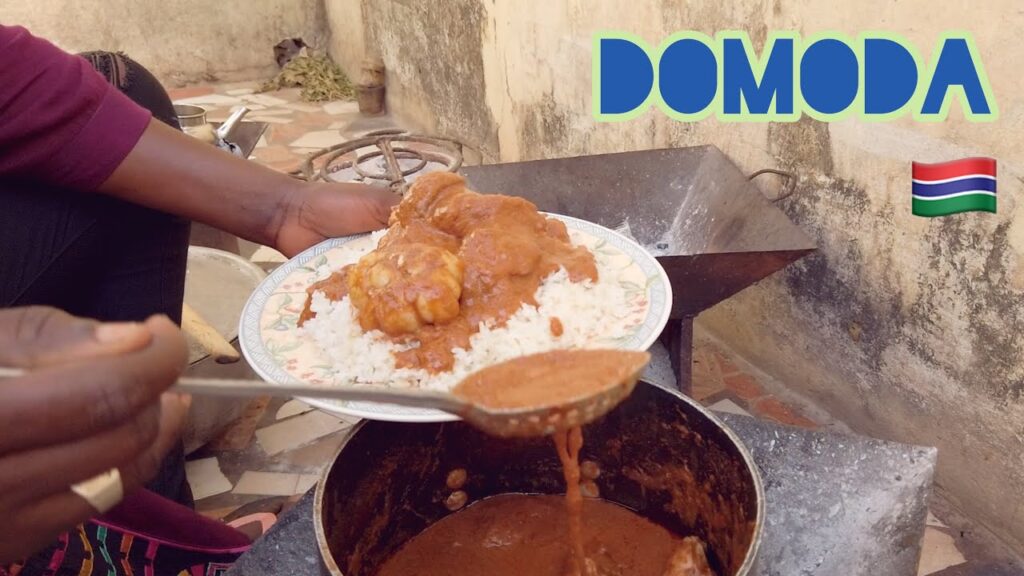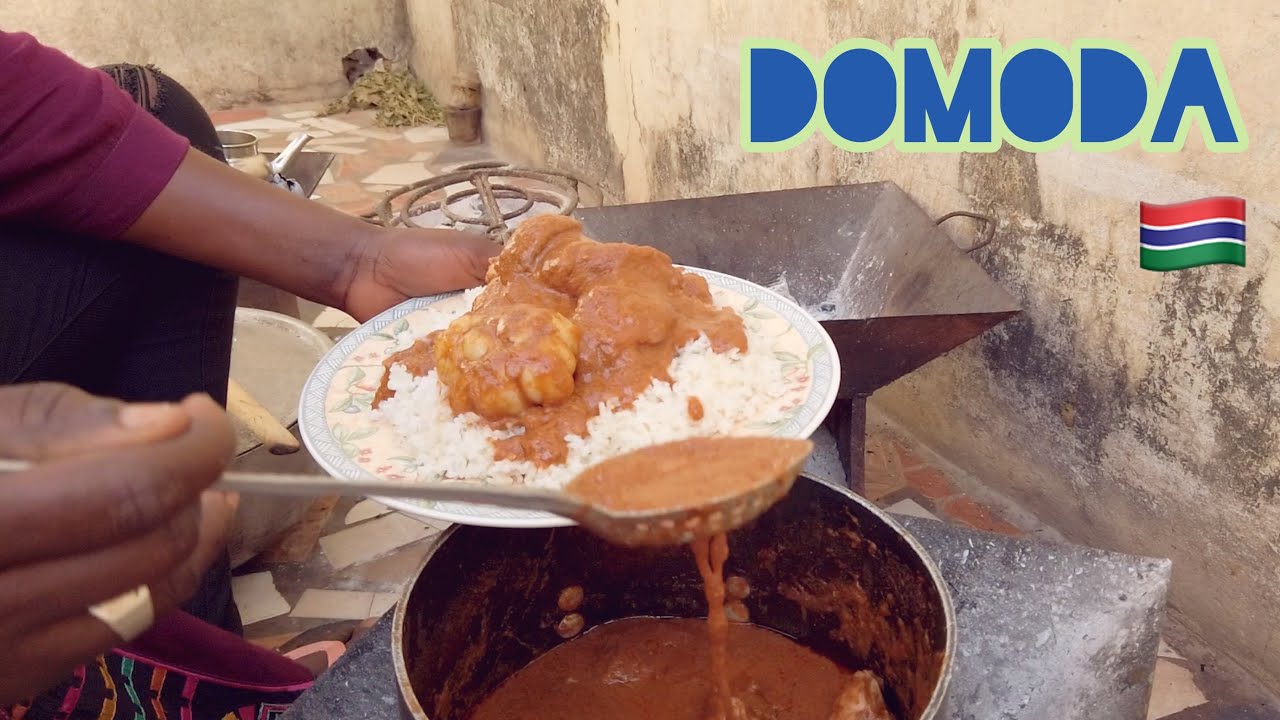
Gambia Culture Food: A Culinary Journey Through West Africa
Gambian cuisine, a vibrant tapestry woven with influences from neighboring West African countries and beyond, offers a unique and flavorful experience. This article delves into the heart of Gambia culture food, exploring its rich history, key ingredients, preparation methods, and cultural significance. We aim to provide a comprehensive understanding of Gambian gastronomy, going beyond mere recipes to uncover the stories and traditions that make it so special. Whether you’re a seasoned foodie or simply curious about exploring new culinary horizons, this guide will offer valuable insights into the delicious world of Gambia culture food.
Understanding Gambia Culture Food: A Culinary Heritage
Gambian cuisine is more than just sustenance; it’s a reflection of the country’s history, geography, and cultural values. Influenced by its location along the Gambia River and its interactions with various ethnic groups, including the Mandinka, Wolof, Fula, and Jola, Gambian food is a melting pot of flavors and techniques. The availability of fresh seafood from the Atlantic coast and fertile land for agriculture has also shaped the culinary landscape. Traditional Gambian cooking emphasizes the use of locally sourced ingredients and time-honored methods passed down through generations.
Key Ingredients in Gambian Cuisine
Several ingredients form the foundation of Gambian dishes:
- Rice: A staple grain, rice is served with almost every meal.
- Fish: Abundant along the coast and in the river, fish is a primary protein source, prepared in various ways – grilled, fried, smoked, or stewed.
- Groundnuts (Peanuts): A key ingredient in many sauces and stews, adding richness and flavor. Groundnut stew, or Domoda, is a national dish.
- Tomatoes and Onions: The base for many sauces and stews, providing depth and complexity.
- Chili Peppers: Used extensively to add heat and spice to dishes.
- Cassava: A root vegetable used in various forms, including boiled, fried, and ground into flour.
- Okra: A popular vegetable used in soups and stews, adding a slightly slimy texture.
- Baobab Fruit: Used to make juice and sauces, adding a unique tangy flavor.
Cooking Methods and Techniques
Traditional Gambian cooking often involves slow-cooking methods, allowing flavors to meld and develop fully. Stews and sauces are simmered for hours, resulting in rich and complex flavors. Grilling and smoking are also common techniques, particularly for fish. Many dishes are cooked over open fires or charcoal stoves, imparting a smoky flavor. The use of traditional cooking utensils, such as clay pots and wooden spoons, further enhances the authenticity of Gambian cuisine.
Domoda: The Heart of Gambia Culture Food
Domoda, a rich and flavorful groundnut stew, is considered the national dish of Gambia. Its creamy texture and savory-sweet flavor make it a beloved staple in Gambian households. The dish typically consists of meat (beef, chicken, or fish) simmered in a groundnut-based sauce with tomatoes, onions, chili peppers, and other spices. It is usually served with rice. Each family often has its own unique variation of Domoda, reflecting regional preferences and personal tastes. The quality of the groundnuts is crucial to the success of the dish, with freshly ground nuts providing the most intense flavor.
Yassa: A Tangy and Flavorful Delight
Yassa is another popular Gambian dish, characterized by its tangy and flavorful marinade. Chicken or fish is marinated in a mixture of onions, lemon juice, mustard, and spices, then grilled or baked. The marinade infuses the meat with a zesty and aromatic flavor. Yassa is typically served with rice or couscous. The dish is often prepared for special occasions and celebrations, reflecting its importance in Gambian culture. The key to a great Yassa is to marinate the meat for at least several hours, allowing the flavors to fully penetrate.
Benachin: A One-Pot Rice Dish
Benachin, also known as Jollof Rice, is a popular one-pot rice dish found throughout West Africa, with its own distinct Gambian variation. Rice is cooked in a flavorful tomato-based sauce with meat (beef, chicken, or fish), vegetables, and spices. The dish is simmered until the rice is cooked through and the flavors have melded together. Benachin is a hearty and satisfying meal, perfect for feeding a crowd. The Gambian version often features smoked fish, adding a unique smoky flavor to the dish. The secret to a perfect Benachin is to use long-grain rice and to avoid stirring the rice too much during cooking, which can make it mushy.
Other Notable Gambian Dishes
Beyond Domoda, Yassa, and Benachin, Gambian cuisine offers a wide range of other delicious dishes:
- Plasas: A spinach stew cooked with smoked fish, groundnuts, and chili peppers.
- Supakanja: An okra soup cooked with fish, meat, and vegetables.
- Mbahal: A fish and rice dish cooked with groundnuts and vegetables.
- Akara: Fried bean cakes, a popular street food.
- Wonjo Juice: A refreshing drink made from hibiscus flowers.
The Cultural Significance of Food in Gambia
Food plays a central role in Gambian culture, serving as a means of social interaction, celebration, and expressing hospitality. Meals are often shared communally, with family and friends gathering around a large bowl of food. Eating with the right hand is customary. Offering food to guests is considered a sign of respect and generosity. Food is also an integral part of religious and cultural ceremonies, with specific dishes prepared for special occasions. For example, during Ramadan, specific dishes are prepared to break the fast. The preparation and sharing of food are important ways of preserving and transmitting cultural traditions from one generation to the next.
Experiencing Gambia Culture Food: A Journey for the Senses
Exploring Gambia culture food is an adventure for the senses, offering a taste of West Africa’s rich culinary heritage. From the bustling markets filled with fresh produce to the cozy restaurants serving traditional dishes, Gambia provides a unique and authentic culinary experience. Sampling local delicacies is a great way to connect with the local culture and learn about the country’s history and traditions. Many restaurants offer cooking classes, allowing visitors to learn how to prepare traditional Gambian dishes. Visiting local markets and interacting with vendors is a great way to discover new ingredients and learn about traditional cooking methods. Don’t be afraid to try new things and embrace the flavors of Gambia!
The Future of Gambia Culture Food
As Gambia becomes increasingly connected to the global community, Gambian cuisine is gaining recognition and appreciation worldwide. Gambian restaurants are opening in cities around the world, introducing new audiences to the flavors of West Africa. Chefs are experimenting with modern techniques and ingredients, while still preserving the authenticity of traditional dishes. The growing interest in sustainable and locally sourced food is also contributing to the preservation of Gambian culinary traditions. The increasing popularity of West African cuisine will continue to propel Gambia culture food into the spotlight.
Q&A: Deep Dive into Gambian Cuisine
Here are some frequently asked questions about Gambia culture food, providing insights into its nuances and traditions:
- What is the most authentic way to experience Gambian food?
Eating at local restaurants and visiting markets is the most authentic way. Many Gambian families also welcome guests to share meals. - Are there vegetarian options available in Gambian cuisine?
Yes, while many dishes feature meat or fish, vegetarian options like vegetable stews and rice dishes are readily available. - What are some common spices used in Gambian cooking?
Chili peppers, ginger, garlic, cumin, and coriander are commonly used spices. - How does Gambian cuisine differ from other West African cuisines?
While there are similarities, Gambian cuisine has its own unique flavor profile, influenced by its coastal location and specific ethnic groups. - What is the best time of year to visit Gambia for food lovers?
The dry season (November to May) is generally considered the best time to visit, as the weather is more pleasant for exploring markets and restaurants. - What is the proper etiquette for eating Gambian food?
Eating with the right hand is customary, and it’s polite to accept food offered to you. - How has tourism impacted Gambia culture food?
Tourism has led to increased awareness of Gambian cuisine and the development of restaurants catering to international tastes. - Can I find Gambian ingredients outside of Gambia?
Some ingredients, like groundnuts and rice, are readily available, while others may require specialty stores or online retailers. - Are there any specific drinks that are traditionally paired with Gambian food?
Wonjo juice and baobab juice are popular traditional drinks. - What are some common misconceptions about Gambian food?
One common misconception is that all Gambian food is extremely spicy. While chili peppers are used, dishes can be adjusted to suit individual preferences.
Conclusion: Savoring the Flavors of Gambia
Gambia culture food is a testament to the country’s rich history, diverse cultural influences, and abundant natural resources. From the creamy Domoda to the tangy Yassa, each dish tells a story and offers a unique culinary experience. By exploring the flavors of Gambia, you can gain a deeper appreciation for the country’s culture and traditions. We encourage you to embark on your own culinary journey through Gambia, savoring the delicious flavors and discovering the warmth and hospitality of its people. Share your experiences with Gambia culture food in the comments below!
Explore our advanced guide to West African Cuisine for more information.

